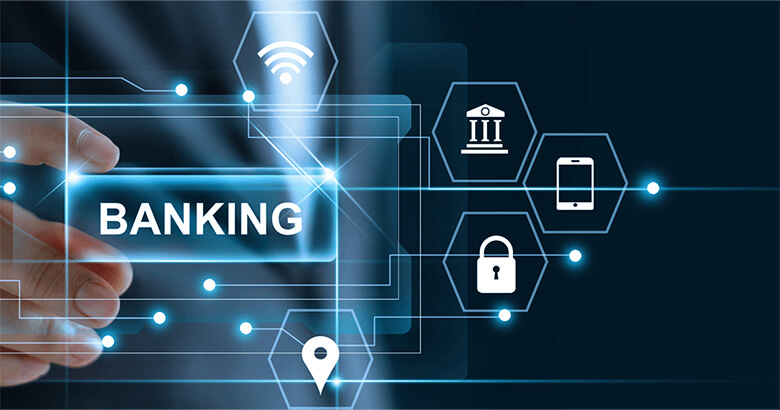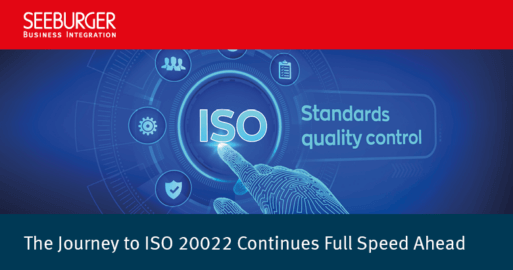Four Best Practices to Help Banks Supercharge Their Payments Modernization Efforts

Effective modernization starts with following established best practices. In the case of digital payments, I recommend four practices that can accelerate your modernization efforts, business connectivity and continuity and reduce barriers to profit.
Many banks, enterprises and businesses still struggle to keep up with payments modernization practices. Payments networks and clearinghouses worldwide are moving toward ISO 20022 and other industry standards, making initiatives such as open banking, real-time payments and others possible. Additionally, the SWIFT global payments initiative (gpi) is requiring banks to move to ISO 20022 as part of their modernization effort. There are many benefits to payments modernization, including faster time to revenue, yet banks, enterprises and businesses face challenges that hinder progress.
Many enterprises within the finance and banking industry rely on mainframes and legacy applications, and most are looking for innovative ways to modernize payments processing. Their reliance on in-house systems limits agility and hinders end-to-end modernization efforts. And while business leaders recognize the value and profitability of direct payments connectivity through digital services and APIs, implementation through standard development cycles can be a time-consuming process.
While IT leaders look for modernization strategies to make their applications faster and more agile, executives and line of business leaders search for effective ways to capitalize on payments modernization. Banks connect with business partners that offer differentiating services through the cloud, yet payments processing often happens internally, on proprietary systems. IT leadership is challenged with connectivity issues, siloed applications, and expensive, ongoing integration efforts that continually add complexity to their growing application stacks.
Effective modernization starts with following established best practices. In the case of digital payments, I recommend four best practices that can accelerate your modernization efforts, business connectivity and continuity and reduce barriers to profit.

#1 – Design for reusability
One of the end-goals of modernization is service delivery acceleration. Development teams that continually start from scratch on new efforts, or that keep adding to monolithic application structures cannot meet the demands of our rapidly transforming digital space. Since the inception of object-oriented languages and design patterns, software teams have sought to perfect the development of repeatable architectures.
I have found that modernization efforts take reusability to another level. Microservices development, fueled by DevOps cultural shifts, relies on reusable code components and repeatable deployment workflows to accelerate services delivery. The driver behind successful microservices development and the CI/CD pipelines is an orchestration layer that can keep up with development speed, product scale and technology innovation. Reusable code and workflows, when properly orchestrated, also reduce the risk of human error and increase deployment stability.
Consider design patterns in payments modernization that continue to support your existing clientele, while preparing for the future.
#2 – Use an integration framework that keeps your development team agile
Whether your company has hundreds of developers or a handful, they represent a finite resource. Traditional development efforts often relied on expensive staffing augmentation engagements to create a single solution. Once the effort was complete, your contract team would leave, resulting in a knowledge drain and widening your skills gap. These homegrown applications would become more expensive over time, as new features got tacked on in piecemeal fashion, resulting in management complexity and reduced security.
Modernization means doing more with what you have while reducing costs, and that includes maximizing the value of the team you already have on staff. By starting from a proven integration platform, you can accelerate your modernization efforts and keep your development team agile as the industry changes. Integration frameworks allow you to keep using your in-house legacy solutions, while moving toward a low-cost development model, providing modern interfaces and agility in the cloud.
Your success, however, depends greatly on the integration platform that you choose. By selecting a platform that can quickly connect your legacy systems – even those systems still running on your mainframes – to cloud services and your in-house developed cloud-native and cloud-ready solutions, you can move at your own pace toward a fully modernized application stack.
#3 – Stay flexible for faster action on ever-changing regulations
The financial industry faces pressures to keep up with demands, including changing industry standards and shifting customer expectations. With the looming expectations around ISO 20022, organizations have a finite period in which to react. And, banks have to respond to new government mandates, including small business loan availability, payment deferments, and more when the need arises.
I’ve experienced the stress that comes with the pressure of responding to industry changes. Keeping up is a perpetual risk for organizations that still rely primarily on legacy IT. When the standards change, a new mandate gets handed down, or your competitors suddenly offer services that draw customers away, you don’t have years to adapt – you have months, or even weeks. The key to success, I’ve found, is having an infrastructure in place that can adapt quickly to onboard new features and certify your partner ecosystem, you may find your organization at risk for penalties and lost profits.
Integration solutions with built-in functionality and available libraries, APIs or workflows can help you overcome the risks of mandated change no matter how large your institution and partner ecosystem grows. By building automation into your solution on an agile integration framework, you can quickly integrate and validate features, services, connections and partners at any point in the development or integration cycle.
One of the challenges of payments modernization is to continue traditional ways of handling payment instructions while enabling smarter payments and providing value-added services. Utilizing ISO 20022 as a canonical format for payments orchestration provides the needed flexibility. An integration and orchestration framework that is standardized on ISO 20022 is key to payments modernization.
#4 – Consider cost-saving services in the cloud
From a bank’s perspective, and especially where payments are concerned, data governance and security are paramount. As I stated previously, the banking industry has largely relied on proprietary or on-premises solutions for their ability to provide greater security and access control. However, mature cloud infrastructures offer unprecedented levels of cost-effective scalability and elasticity, especially for banks that are focused on building out partner ecosystems. While banks can modernize their internal applications to come into compliance with ISO 20022, they still have the challenge of offering simplified payment gateways at scale for their ecosystem partners. That’s where a cloud integration framework can help.
Cloud integration frameworks allow you to securely expose payment services in the cloud to accelerate and simplify payments processing without requiring complete code modernization. With the right framework, you can keep your solutions in house – even on a mainframe – while offering low-code/no-code integration features that help you bring your corporate clients and SMB partners onboard quickly. And, the elastic nature of cloud infrastructure lets your bank and your customers and partners scale on demand, all while maintaining data security and access control at every level. Not only can you save on capital expenses by eliminating the need for extensive data-center expansion to support your growing ecosystem, but you can share your cost savings with your customers by giving them right-sized integrations that fit their needs and budget.
SEEBURGER is ready to help you accelerate your payments modernization efforts with an agile, secure and scalable business integration platform that is built on 30 years of evolving best practices. We have helped over 10,000 global customers connect their IT systems, applications, cloud services and mobile apps to create high-performance solutions, launch new, innovative business models, and supercharge their modernization strategies.
Thank you for your message
We appreciate your interest in SEEBURGER
Get in contact with us:
Please enter details about your project in the message section so we can direct your inquiry to the right consultant.
Written by: Rakesh Kukkamalla
Rakesh Kukkamalla, Enterprise Architect & VP Solution Engineering is responsible for leading design, development, and delivery of complex, high-performance, scalable integration solutions for SEEBURGER. Since joining SEEBURGER, he has been instrumental in the migration and consolidation of legacy integration solutions to hybrid integration platforms for several organizations in the financial services and insurance industries. His focus today is to help financial organizations in their payments modernization efforts with the adoption of ISO 20022. Rakesh’s expertise in MFT, B2B, APIs, and SEEBURGER’s Payments Integration Hub solutions is key to his work with customers across the globe. He has a bachelor’s degree in computer science from the National Institute of Technology and a master’s degree in computing studies from Arizona State University.





